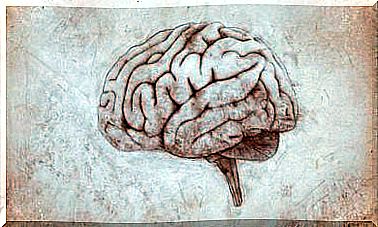The Curve Of Emotions

What is the emotion curve? Many define an emotion as a subjective state which has an immense and intense affective charge. And while it is quite complicated to explain what emotions are, we can all clearly describe these subjective states.
For example, we can describe them by remembering a situation in which we were angry or happy. Many of these emotions, from sadness to fear, have a very similar development. In session, we define this as the curve of emotions.
What is an emotion for?
According to researchers like Martínez-Sánchez and his collaborators (2011), the suppression or non-expression of emotional events that are very significant for the person (for example, the mourning of a loved one, the expression of affection …) may cause marked physiological hyperactivation, immunosuppression and strongly contraindicated effects on physical and mental health in the medium to long term.
So why are emotions so relevant and even more so their expression? These same authors underline the existence of intrapersonal functions – more related to homeostasis and survival – and of extrapersonal functions, which are related to a more social role.

Intrapersonal factors of emotion
- Coordinate the different cognitive, physiological and behavioral response systems in the same direction.
- Activate behaviors that could be inhibited when emotion is absent : for example, a non-athletic person may decide to run while feeling fearful. Or a person who defines themselves as nonviolent can stand up for someone in distress when they are angry
- They prepare the body for withdrawal or combat behaviors : emotions of course play a very important role in our survival. Feeling fear is nothing more than a prelude to fleeing or fighting behavior against this stimulus which we interpret as a threat. Without this fear marker, the body would not be ready to face or flee
For example, when an alarm is given in response to a dangerous stimulus, i.e. when we feel fear, the hypothalamic-pituitary-adrenal system is activated, which in turn activates the adrenal glands to emit glucocorticoids. Endogenous epinephrine and opiates are released in case the body has been attacked to reduce pain. In turn, it reduces the activity of systems that are not needed to escape at that time. Like the digestive system.
Thanks to fear, the individual in danger increases his heart rate. It contracts the spleen to promote the production of red blood cells in the event of an injury. He dilates his pupils, etc.
- They promote rapid processing of information : the evaluation of the characteristics of adjacent stimuli becomes rapid. This makes it possible to quickly decide on the best actions to adapt to the demands of this environment which arouses emotions.
Extrapersonal factors of emotion
In connection with the extrapersonal functions of emotions, we find that they allow us to communicate our intentions to others, to share with others what we feel and to control the ease of expression, gestures and voice in order to influence also the behavior of others.
As Aristotle wrote, man is a zoon politikon, and emotions also play a socializing role. For example, and in relation to the above, you can look for certain answers in individuals through certain emotions. Therefore, there are people who use sadness to receive support, others who use affection or happiness to accomplish something and so we could continue with this more instrumental part of the emotions.
The curve of emotions
It is difficult to maintain the maximum intensity of an emotion over a long period of time. In reality, the normal functioning of an emotion is an escalation where the sensations become stronger and stronger. You can reach a maximum point, a roof from which the emotion cannot be more intense. From there, the magnitude usually decreases until it returns to the baseline.
This, which just seems intuitive, is a fact that many people forget in their day-to-day life. And all the more so when it comes to mental health. It happens with the emotions and also with the psychic constructions. Such as anxiety attacks or panic attacks. Therefore, none of the above usually lasts longer than ten minutes.
Despite knowing the emotional intensity that accompanies fear, anger or sadness, or perhaps precisely because of this vehemence, clients who come to the session usually perform actions with very significant consequences at the top of the game. curve of emotions. It can become counterproductive.
Managing emotions in therapy
In the beginning, when therapy is not yet advanced enough for the person to manage their reactions, it is helpful to deal with the emotional curve. It is not about controlling them. Rather, it is about avoiding the maximum negative consequences that an intense emotion badly managed can have.
For this reason, in patients suffering from depression, anxiety, bereavement, couples therapy, etc., it is very useful in the first sessions to carry out detailed psychoeducation on the functioning of emotions. Additionally, you should focus on the things that can’t be done when you are at the peak of that emotion. The course of therapy allows the person not to have these intense and exacerbated emotions.

Three things not to do during peak emotional times
It is therefore important to explain which are the three actions that it is better not to do when you are at the height of an emotion. Emotions can be anger, sadness, fear, and even happiness. This is recommended because at a time of such emotional intensity it is difficult for these actions to be carried out rationally.
These actions are:
- Make decisions : Taking the example of a woman suffering from major depression, it is important to make her understand that in her times of greatest discomfort, it is very dangerous to make decisions of any kind. The decisions made will always go hand in hand with the deep sadness or hopelessness that one feels at the time. In this way, we will also avoid decisions such as suicide or self-harm.
- Trying to solve the problem : If the intense emotion is explained by a particular event, it is not advisable to try to remedy this situation by feeling such an intense emotion. Since you don’t have that rational, but emotional part. You don’t have all the tools you normally have to solve a problem. Moreover, the desperation of this moment can again lead the individual to make misguided decisions in the search for a solution to the conflict. The best thing to do is leave it for when the person starts to notice how much their emotions are fading.
- Thinking : emotion can take with it a myriad of catastrophic, irrational and unnecessary thoughts at the moment that the individual is going through. In fact, some of these thoughts can trigger new emotions with the same intensity as the previous ones. Thinking can lead to irrational action
We recommend guiding actions that cannot be carried out at the height of an emotion. But in addition, to promote other actions that can be taken. In fact, it is about taking explicit concrete actions that can replace the desire to think. To solve the problem. Or to make decisions. It may be helpful to put these alternatives on a list. And so to have them in view at times when the emotional intensity is greater.









